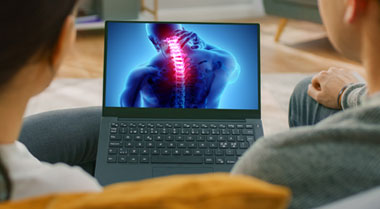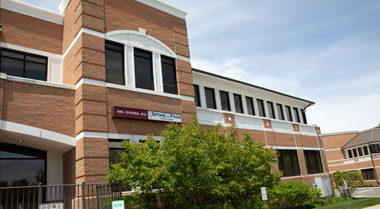Spinal Cord Stimulation
A spinal cord stimulator is an implanted device that sends low levels of electricity directly into the spinal cord to relieve pain.
Spinal cord stimulators consist of thin wires (the electrodes) and a small, pacemaker-like battery pack (the generator). The electrodes are placed in the epidural between the spinal cord and the vertebrae through the epidural needle, and the generator is placed under the skin, usually near the buttocks.
What is the trial?
A trial is performed to see if a patient is a candidate for a permanent spinal cord stimulator to relieve pain. During the trial, lead is placed through the epidural needle without an incision and placed in an appropriate position, and taped to the skin. It is powered through a battery outside the body. The trial is done over 5 to 7 days, and if patients get more than 60% relief, then the patient is a candidate for a permanent implant.
Where is the procedure performed?
The trial is not a painful procedure. It's almost similar to getting an epidural steroid injection and can be done either in the office or a surgical center.
A permanent implant is a surgical procedure that involves an incision, so it has to be done in an operating room in the surgical center or hospital.
Who is the right candidate?
Anyone who has undergone injections or even surgery and still has persistent back and leg or neck and arm pain; other candidates are patients who do not want to consider surgery for chronic conditions like severe spinal stenosis. It is much more effective than being on pain medications over the long-term.
How long does the relief last?
The relief lasts for a long time in years unless the lead moves, the condition progresses, or a new painful condition like a new herniated disc occurs. The battery on the generator usually last 7 to 10 years and is replaced with a minor procedure.
Educational Videos
Learn more about spinal cord stimulation by watching these educational videos.



